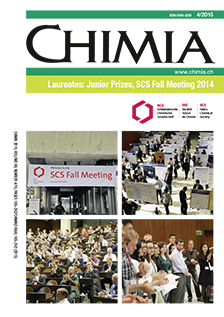Thin Layer Samples Controlled by Dynamic Electrochemistry
DOI:
https://doi.org/10.2533/chimia.2015.203Keywords:
Coulometry, Desalinator unit, Ionophore-based membranes, Paper-based microfluidic devices, Thin layer sampleAbstract
We summarize here recent advancements on thin layer samples controlled by dynamic electrochemistry techniques for determining different ions that include potassium, calcium, protamine, nitrate, nitrite and halides in diverse environmental and clinical samples. Generally, a thin layer liquid (less than 100 μm in thickness) is confined between a working electrode and an ion-selective membrane. Once an external electrical perturbation (i.e. constant potential) is applied to the system, an exhaustive ion transfer process is imposed in the entire thin layer solution. As a result, the observed charge (integration of the current decay) is proportional to the depleted ion concentration. Other electrochemical protocols such as linear sweep voltammetry were also explored aiming at the discrimination of several ions presented in the thin layer. One of the most attractive examples involves the detection of a mixture of three halides (iodide, bromide and chloride), which can be well resolved at moderated scan rates (10 mV.s–1). Paper-based coulometric sensing on thin layers defined by cellulose papers are being developed in view of translating these new concepts into a reliable and low cost sensing platform.
Downloads
Published
Issue
Section
License
Copyright (c) 2015 Swiss Chemical Society

This work is licensed under a Creative Commons Attribution-NonCommercial 4.0 International License.







